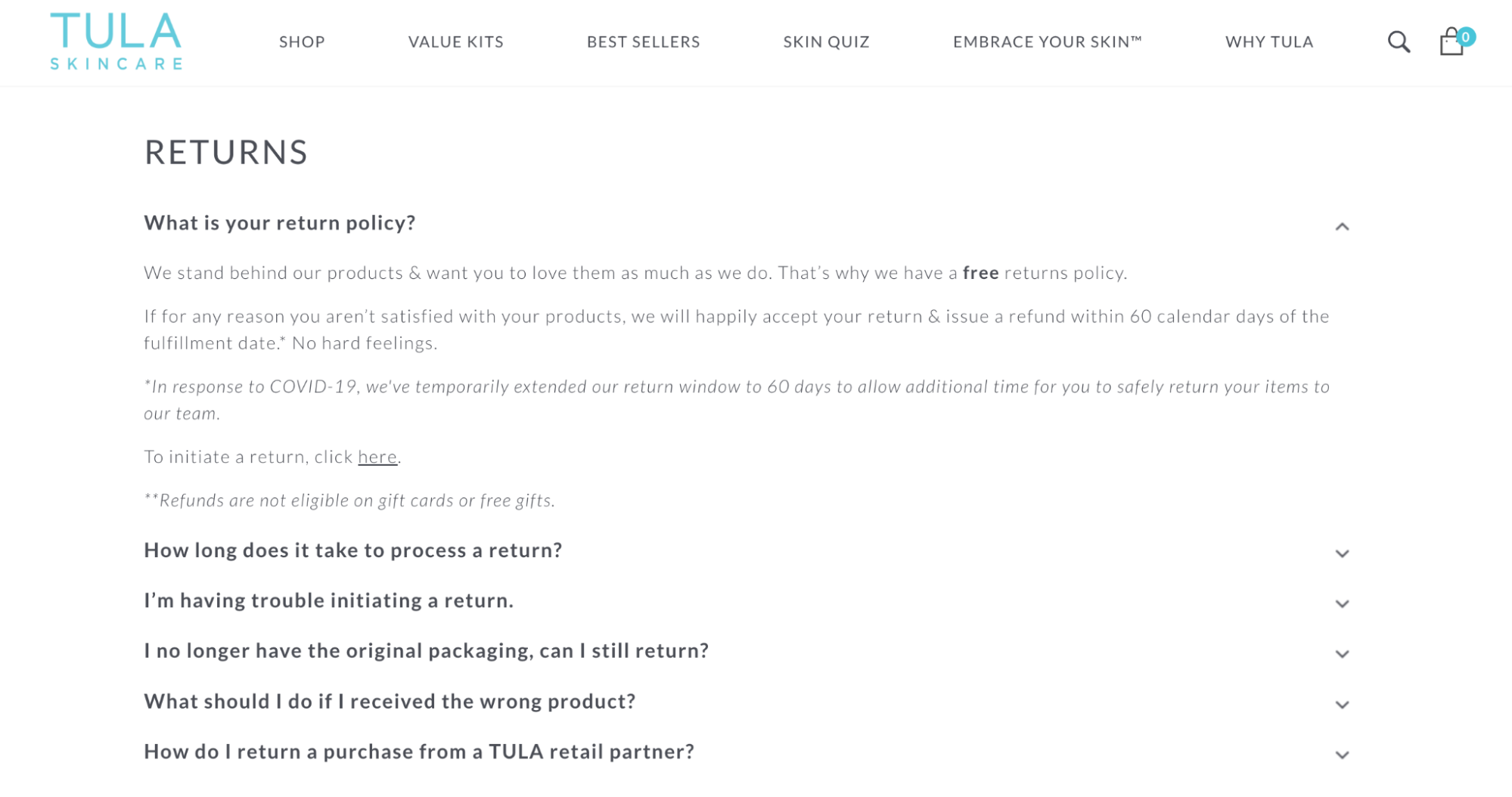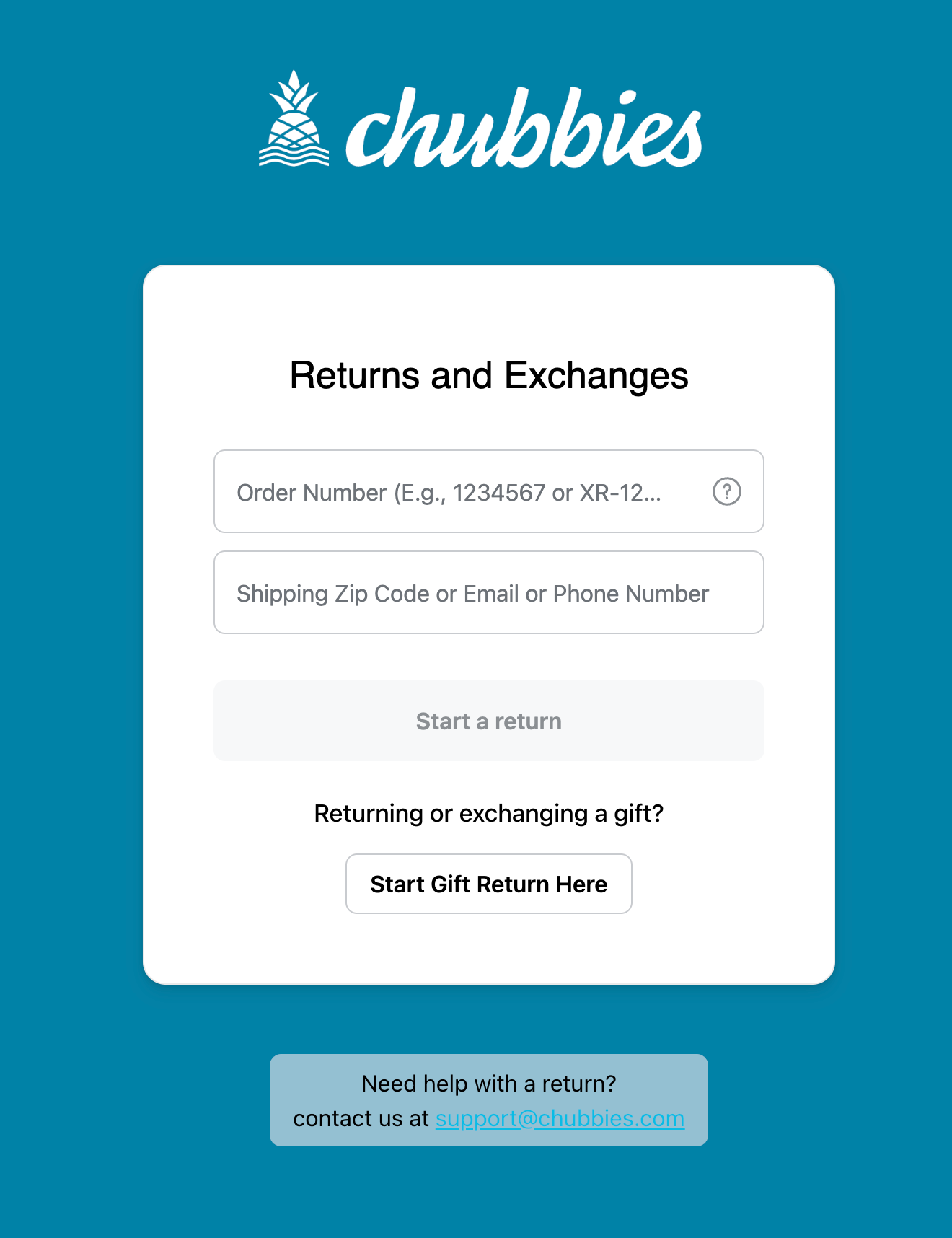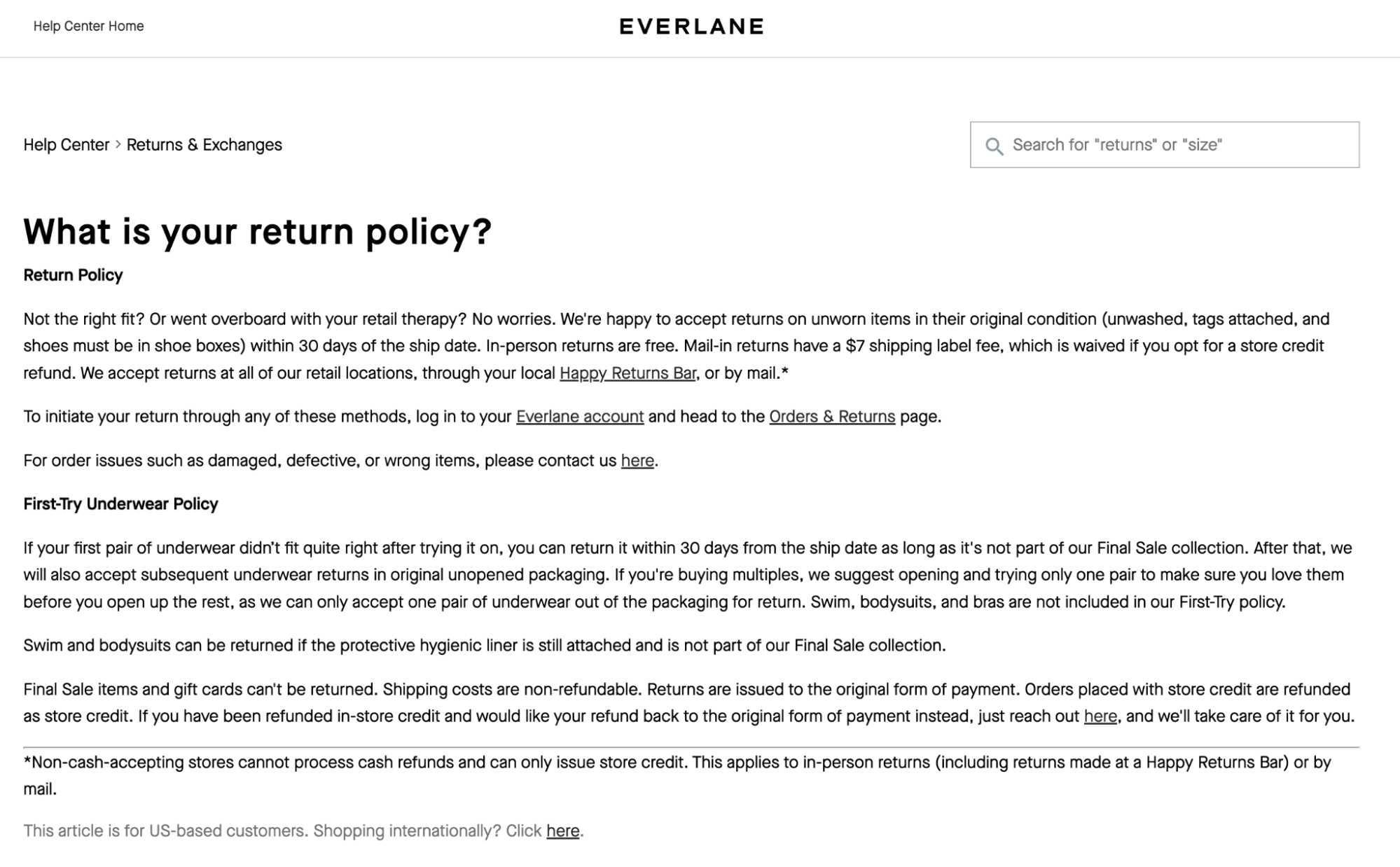Shoppers are returning more items earlier every holiday shopping season. Last year, at least 10% of holiday orders were returned each week from November 2022 to mid-January 2023, per Insider Intelligence.
With these numbers looming, retailers around the world are bracing themselves for even more returns this year, as online shopping becomes an even bigger part of our lives.
Return rates vary widely by industry, sales channel, product type, and how return data is collected and counted. The trend is led by younger shoppers, who often view online holiday purchases as rentals. Returns can quickly reverse your holiday success when you adjust performance for returns and realize:
Your sales are significantly lower than expected
You converted fewer customers than originally thought
Your cost of sales is higher, and your profit margins are lower
Here, we’ll show you how to reduce holiday returns, automate the returns process, and protect yourself from fraudulent returns.
Most holiday returns are fraudulent
According to the latest National Retail Federation report, 17.9% of all orders are expected to be returned. Of this, 10.1% are estimated to be fraudulent returns. Fraudulent returns include:
Returning stolen merchandise
Returning merchandise purchased with fraudulent or stolen tender
Returning items customers never intended to keep (but may have used)
Offering exchanges and store credit can reduce the impact. Likewise, identify repeat offenders by tracking customer returns. Use advanced analytics software to instantly compare purchase and return history, if serial returners always purchase from the same salesperson (brick-and-mortar), or if a customer is repeatedly buying and returning the same item.
5 tips to reduce post holiday returns
1. Protect yourself from fraudulent returns
The best way to prevent fraudulent returns is to not fulfill high-risk orders. But the expected influx of holiday orders can make it nearly impossible to determine if individual customers are serial returners or potential fraudsters. (You can do this by manually cross-checking orders with shopper purchase histories.)
Including automating the fraud detection process, here are five ways to protect your brand against fraudulent holiday returns:
Fraud protection
Get fraud protection on your commerce platform. Fraud protection solutions protect against chargebacks and position you to fulfill holiday orders with confidence.
Ecommerce automation
If your business is more complex, say you offer custom merchandise or print holiday merchandise on demand, ecommerce automation can instantly notify your team to take action. For example, when an order is flagged as high risk, automated workflows can be built to immediately notify printing manufacturers and request a halt in production, and the order can be canceled.
Leveraging fraud protection tools and automation can prevent you from absorbing the production costs and chargebacks of fraudulent orders.
Tracking numbers
Include tracking numbers with each holiday order. Paying extra to require a signature upon delivery protects you against chargebacks stemming from customers who claim they never received their order. While tracking numbers will add to costs, they can also reduce fraudulent refunds.
Receipts and invoices
Demand that customers provide receipts or invoices with returns. Doing so allows you to cross-check the item being returned and ensure it was actually purchased from you. Returns accompanied by an original purchase order are just the first step. Once you receive the return, ensure your warehouse team or third-party logistics (3PL) partner inspects the item being returned to verify that it’s not a counterfeit. Identifying counterfeits prevents them from being returned to inventory, being sold again, and increasing risk to your brand reputation.
Manually check orders
Review that all orders are in good condition, check for any tampering, and ensure serial numbers match, which helps if a returned product is the original one or a counterfeit. Manually checking also involves validating receipts, warranty cards, and other related documents, ensuring they are original and match the details of the purchase. Combining automated systems and manual checks can be the most effective way to protect you.
Build a block list of repeat offenders
The first step in creating a block list is identifying potentially fraudulent or problematic behavior. Check your order history for chargebacks, frequent returns, or other fraud signs. Make a record of the names, addresses, IPs, and other details of the customers involved.
Shopify’s fraud analysis helps you identify fraudulent orders. Avoid chargebacks by reviewing high-risk orders. Shopify’s fraud analysis uses indicators to investigate an order that you think might be fraudulent. The indicators include:
Whether the credit card used for the order passes AVS checks
Whether the customer provided the correct CVV code
Details about the IP address used to place the order
Whether the customer tried to use more than one credit card
While you cannot outright block someone from making a purchase on Shopify, you can use customer tags to label suspicious customers. By tagging these customers, you can filter them out and review their orders manually before fulfillment.
Enforce your return policy
Your return policy should be clearly written and easily accessible on your website. Consider having a dedicated page linked from the footer, within your FAQ, or during the checkout process. The policy should outline all conditions, including timeframes, condition of the product, return shipping responsibility, and any other specifics.

Skincare brand TULA’s return policy embedded in its FAQ page
Ensure that everyone on your team understands the return policy and how to enforce it. They should be prepared to handle common questions and scenarios, as well as how to respond when someone requests an exception.
2. Ban serial returners
It’s not the customer service you imagined offering, but refusing to sell to serial returners who have no intention of becoming loyal long-term customers isn’t so bad if you don’t consider them “customers” at all. In fact, Insider reports more retailers are planning to punish serial returners by withholding discounts as returns costs stay high.
If banning serial returners isn’t part of your strategy, identifying serial returners should be. There are two types of habitual returner personas:
The wardrober or renter: People who buy items to wear once with no intention of keeping them afterward. These people may not be able to afford to own the item, or are taking advantage of generous return policies.
The fitting roomer: Like the shoppers in brick-and-mortar stores who go into fitting rooms with different sizes and colors of the same item, pick their favorite after trying everything on, and return the rest, but online.
You won’t know immediately whether your new holiday customers are serial returners. But mapping their purchase journey will help you identify your new serial returners this holiday season, based on similar behaviors. If you plan on excluding your existing serial returners from holiday promotions, don’t forget about doing the same for customer research efforts around returns.
One of the most efficient ways to learn more about why items are returned is by automating the returns process.
3. Automate post-holiday returns
Automating the returns process, or at least portions of it, means you can focus on value-add tasks, like building more personalized customer experiences. Especially during high return times like the holidays, retailers should streamline the process through automating labels, tracking, and refunds or store credit. For example, a returns solution that automatically offers pre-filled return labels that customers can print on their own simplifies the process and frees your employees to work on higher-value tasks.
Importantly, automation can drive future purchases. Streamline your post-holiday returns with a tool like Loop or other third-party apps.

Retailer Chubbies makes the returns process easy with Loop.
These applications can instantly give customers store credit early on in the return process, which can motivate customers to purchase in the moment and save the sale. These solutions can also support self-serve returns, letting shoppers easily return items online. By adding automated returns and exchanges into your returns workflow, you eliminate shopper wait times. Customers can easily swap sizes or colors in real-time while reducing your staffing needs.
Notably, part of automating the return process includes pushing customers to select a reason for the return. Understanding return trends can inform future promotions, drive how you describe your products online, and even pinpoint quality control issues. For instance, if a particular SKU is being returned for the same reason at abnormal rates, you can trace production back to a specific manufacturer to quickly correct the problem.
You can also use Shopify Flow to track serial returners. First, establish refund thresholds based on per-order dollar values or the number of returned items. Second, use that threshold to automatically do the following:
Tag customers for identification and segmentation.
Notify your customer service team via email or Slack to investigate.
Add those customers as a segment to exclude them from free shipping and/or full-refund offers. (You can do this in an onsite personalization tool.)
Alternatively, you can exclude them from free shipping at checkout by creating a Shipping Script based on one or more of your customer tags.
This is just one step in automating post-holiday returns. The possibilities are even greater when you integrate your returns solution into a well-developed return logistics process that includes warehouse, inventory, and parcel delivery solutions:
First, establish a protocol to efficiently determine whether returned items should be sent to the vendor that manufactured them for repair, moved into inventory, or discarded. Your warehouse or distribution center must possess this capability
Next, returned items that are moved back into inventory must be recognized by your inventory management system so they can be sold again
Last, both your warehouse management system (WMS) and your inventory management system (IMS) must integrate with your third-party logistics (3PL) so returned items can be transported appropriately.
4. Modifying your return policy
Brands are increasingly adopting simple, transparent, and generous return policies that inspire confidence and trust in consumers. But brands shouldn’t shy away from adjusting their return policies to ensure returns don’t negatively impact their finances and operations.
Return windows
Some major retailers are also implementing clear limits regarding the length of time consumers have to return unwanted items.
Here’s what’s happening:
Consumers often wait until the last minute to return items, even if they have a 30-day return period.
Average time to return is typically the last two th three days before the expiration of the retailer’s return window.
This impacts inventory forecasting, budgets, and personnel as last-minute returns reduce visibility and strategic planning.
Modifying the timeframe for when purchases made can be returned gives retailers better visibility on returns and how they may or may not impact operations. The goal of altering the return window is to influence the average time to return and reduce uncertainty for retailers.
Consider temporarily shrinking the return window for holiday orders, or additional restrictions like adding a restocking fee on high-volume items.
Non-returnable items
If you’re heavily discounting merchandise to drive sales during the holidays, running major campaigns, or experimenting for growth, you might want to adjust your return policy for specific SKUs.
For example, some retailers will make heavily discounted items non-returnable. Others allow customers to exchange items that have been marked down significantly for store credit only. And others will increase the restocking fee for heavily discounted items.
Using product tags for heavily discounted items to attach special return caveats will let you manage returns for specific items and protect profits.
5. Raise your free return spending thresholds
Consider raising the bar in return for offering free returns. Requiring shoppers to spend a certain amount of money to qualify for free shipping aligns the interests of both the brand and the consumer. It also positions you to increase your AOV and recoup any margin sacrificed during holiday promotions.
Beware of shoppers adding items to cart to meet the free shipping threshold who later return part of their order. If this becomes a trend, identify the products most often being returned by customers who meet the free shipping threshold. Consider modifying your policy by not allowing these items to be returned. Or test different free shipping thresholds aimed at reducing partial order returns.
You could also make in-person returns free, like Everlane. If you want to return an item by mail, it costs $7, which it waives if you opt for store credit.

Everlane’s return policy offers many options, including free returns at retail locations.
Post-holiday return success
It’s important to develop a vision for what the right return experience looks like for your shoppers. Below are some best practices for returns:
Since the majority of holiday returns are fraudulent or abusive, set up protections for your brand.
Identify serial returners, exclude them from post-holiday promotions, and use the path-to-purchase map they provide to identify new customers who are likely to become serial returners.
Automate the returns process, and integrate your returns solution with your warehouse, inventory management, and logistics systems and partners.
Consider return policy modifications that shrink the holiday return window, prevent the return of heavily discounted SKUS, and implement spending thresholds in return for free shipping.
Importantly, consider taking your customers’ point of view to get the return experience just right.
Buy and return items from your own site and your peers or competitors. What did you notice? How does your current experience compare? Testing your own approach to returns, and how it measures up to your peers, is a smart way to generate a return on your post-holiday returns.
Read more
- Why Leading Indicators in Ecommerce Are the Key to Success & How to Find Them
- Intuitive Copywriting: How to Say The Right Thing, in The Right Place, at The Right Time
- Customer Retention: How to Turn New Shoppers into Repeat Customers
- Shopify Flow Templates you can use During COVID-19
- How to Increase Customer Lifetime Value (CLV): Pay More Now, Get More Later
- Ecommerce Logistics: How to Diversify and Future-Proof Your Supply Chain
- How to Execute an Effective Ad Retargeting Campaign That Works
- The Master Guide to Google Channel
Holiday Returns FAQ
What is the most popular day for holiday returns?
The most popular day for holiday returns is usually the Monday or Tuesday after Christmas Day.
What happens to holiday returns?
If they’re in good condition, holiday returns are often restocked, refurbished, or resold, but if they’re unsellable, they might be liquidated, donated, or recycled. It depends on the retailer’s policy, the item’s condition, and how cost-effective each option is.
What are the statistics for holiday returns?
The exact percentage of clothing returned after the holidays varies significantly, but in general, around 10% to 20% of clothing items purchased during the holidays are returned.
Can you return holiday items?
Most stores have a holiday return policy that allows customers to return items purchased between November 1 and December 25 within 30 to 60 days of purchase, with or without a receipt. Some stores may offer an extended return policy for the holiday season, allowing customers to return items within 90 days or even up to January 31 of the following year.





